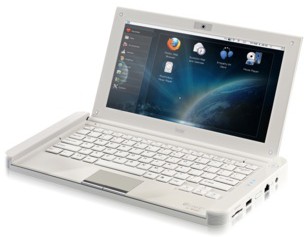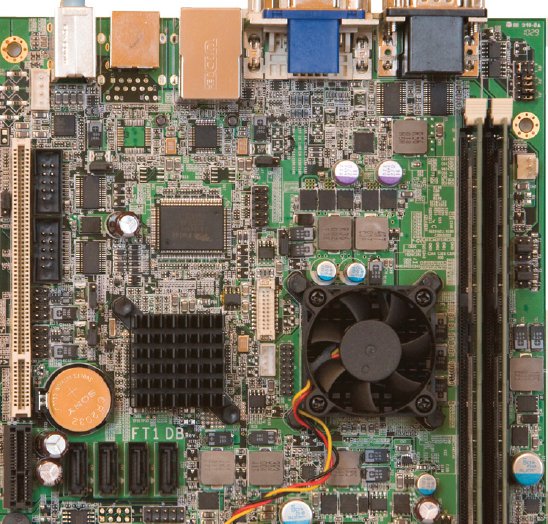MIPS Technologies announced the launch of its new Developer Community at developer.mips.com. The new site is specifically tailored to the needs of software developers working with the Android™ platform, Linux operating system and other applications for MIPS-Based™ hardware. All information and resources on the site are openly accessible. “This new community demonstrates our ongoing commitment to the vibrant open source effort around the MIPS cores and architecture, as well as around our customers’ and their customers’ hardware platforms,” said Art Swift, vice president of marketing and business development, MIPS Technologies. “As the MIPS architecture continues to expand into new high-volume markets such as mobile handsets and tablets, we see an increasing need for these resources among the growing MIPS developer community.” Software engineers can find development resources and tools on the site including: Android on MIPS source code, porting instructions, a native development kit (NDK) for Android applications development on […]
Boot Linux in 300 milliseconds
MakeLinux.com managed to boot Linux from the bootloader to console within 300ms using a customized (and minimal) version of Linux running on Beagleboard based on TI OMAP 3530 (Cortex A8) as per their Super Fast Boot project. Here’s the analysis of the boot sequence and timings: Logging starts at 70 ms from reset. Boot time from reset is 300 + 70 = 370 ms. Logging starts at 330 ms from power on. Cold boot time is 330 + 300 = 630 ms. Loading of 1.5 MiB Linux image from NAND takes 237 ms with throughput 6 MiB/s. Code execution takes 60 ms or 43M CPU cycles. (For other CPU frequency execution time is different, but the number of processor cycles is the same) The most time-consuming operation is coping firmware from NAND flash. They used a Linux 2.6.32 kernel from DVSDK 3.01, in a minimal configuration (900KB footprint), the boot […]
Video commemorating the 20th Anniversary of Linux
Linux is born in April 1991, with Linus Torvalds making it public with the following post on minix newsgroups: Hello everybody out there using minix – I’m doing a (free) operating system (just a hobby, won’t be big and professional like gnu) for 386(486) AT clones. … PS. Yes – it’s free of any minix code, and it has a multi-threaded fs. It is NOT protable (uses 386 task switching etc), and it probably never will support anything other than AT-harddisks, as that’s all I have :-(. Today, Linux is powering all kind of devices from supercomputer, stock exchange servers to smartphones, smart tv, cars and anything you can think of. Jean-Luc Aufranc (CNXSoft)Jean-Luc started CNX Software in 2010 as a part-time endeavor, before quitting his job as a software engineering manager, and starting to write daily news, and reviews full time later in 2011. www.cnx-software.com
Phytec Texas Instruments OMAP4430 Computer Module
Phytec announced the first system on module based on Texas Instruments OMAP4430. The phyCORE-OMAP4430 features up to 1GB LPDDR2 DRAM, 1GB NAND Flash, one USB Host, one USB OTG port, Ethernet, I2C Interface, DSI and HDMI video output and consumes a maximum of 3 Watts only. Here are the full specifications of the phyCORE-OMAP4430 computer module: Texas Instruments OMAP4430 @ 1GHz PowerVR SGX540 GPU 56 KB On-chip SRAM and 512 MB (default) or 1 GB LPDDR2 DRAM 128, 256, 512 MB (default) or 1 GB NAND Flash 4 (default) or 32 KB EEPROM 2 SD/SDIO/MMC Expansion slot 4 UARTs, 1 RS232, 3 I2C, 1 I2S and 2 SPI/SSP serial connections. 1 USB Host and 1 USB OTG ports. 10/100 MBit Ethernet 2 x DSI, 1 x HDMI video output ports up to 1080p encode/decode and Touch screen support DVI/HDMI, PWM, Camera, Keypad, JTAG and RTC Dimensions: 41 x 51 mm […]
C Code to get MAC Address and IP Address
Function in C to return the MAC Address:
|
1 2 3 4 5 6 7 8 9 10 11 12 13 14 15 16 17 18 19 20 21 22 23 24 25 26 |
/* Returns the MAC Address Params: int iNetType - 0: ethernet, 1: Wifi char chMAC[6] - MAC Address in binary format Returns: 0: success -1: Failure */ int getMACAddress(int iNetType, char chMAC[6]) { struct ifreq ifr; int sock; char *ifname=NULL; if (!iNetType) { ifname="eth0"; /* Ethernet */ } else { ifname="wlan0"; /* Wifi */ } sock=socket(AF_INET,SOCK_DGRAM,0); strcpy( ifr.ifr_name, ifname ); ifr.ifr_addr.sa_family = AF_INET; if (ioctl( sock, SIOCGIFHWADDR, &ifr ) < 0) { return -1; } memcpy(chMAC, ifr.ifr_hwaddr.sa_data, 6) close(sock); return 0; } |
Function in C to return the IP Address:
|
1 2 3 4 5 6 7 8 9 10 11 12 13 14 15 16 17 18 19 20 21 22 23 |
/* Returns the interface IP Address Params: int iNetType - 0: ethernet, 1: Wifi char *chIP - IP Address string Return: 0: success / -1: Failure */ int getIpAddress(int iNetType, char chIP[16]) { struct ifreq ifr; int sock = 0; sock = socket(AF_INET, SOCK_DGRAM, 0); if(iNetType == 0) { strcpy(ifr.ifr_name, "eth0"); } else { strcpy(ifr.ifr_name, "wlan0"); } if (ioctl(sock, SIOCGIFADDR, &ifr) < 0) { strcpy(chIP, "0.0.0.0"); return -1; } sprintf(chIP, "%s", inet_ntoa(((struct sockaddr_in *) &(ifr.ifr_addr))->sin_addr)); close(sock); return 0; } |
Jean-Luc Aufranc (CNXSoft)Jean-Luc started CNX Software in 2010 as a part-time endeavor, before quitting his job as a software engineering manager, and starting to write daily news, and reviews full time later in 2011. www.cnx-software.com
Hercules eCAFE ARM Cortex A8 Netbooks running Linux
Hercules, a subsidiary of Guillemot Corporation, announced two new eCAFÉ netbooks based on Freescale i.MX515 @ 800 Mhz (ARM Cortex A8) that run a custom Linux distribution and feature a dipswitch for flipping to other user-loaded Linux or Android operating systems: eCAFÉ Slim HD – 229 USD: LED screen: 10.1 inch, 1024*600, high brightness Storage: 8Gb Flash (iNAND), extensible up to 72Gb ARM CortexTM A8 FreescaleTM i.MX515 @ 800 MHz processor RAM: 512 Mb WiFi N technology Battery: 2400 mAh (7.4V) for 4.5 hours’ battery life Comfortable “chiclet” keyboard with flat, separate keys – 88% of a standard keyboard 0.3MP webcam with built-in microphone Connections: 3x USB, 1x Headset, 1x Microphone, 1x LAN RJ45, 1x DC-in 12V, 1x External card reader: SD/MMC/SDHC, 1x Internal card reader: SD/SDHC DIP Switch Weight: 1.9lbs / 0.86 kg eCAFÉ EX HD – 269 USD: LED screen: 10.1 inch, 1024*600, high brightness Storage: 16Gb extensible […]
New Digital Media Processor: Conexant CX92755
Conexant announced a new single-chip media processor for multimedia display products such as digital signage, home automation/security and user interface control. The CX92755 is based on ARM™ Cortex-A8 processor and NEON™ single instruction, multiple data (SIMD) engine with Linux and Android development support. The highly integrated SoC also includes an advanced HD video codec and graphics processor, integrated L1 and L2 cache, a PCI Express™ interface and DDR3 memory, The CX92755 integrates peripheral functions including a Class-D amplifier with speaker and line-out, a microphone input, back-light regulator, power supply controller and touchscreen controller. The SoC also includes an embedded high-performance graphics processor, which supports display list processing, alpha blending, and color key control for advanced user interface operation and display effects. the CX92755 also support the major network connectivity standards such as Wi-Fi®, 3G, Bluetooth® and integrated Ethernet. The SoC also integrates Conexant’s HSSD/Smart DAA® (Direct Access Arrangement) interface, and […]
AMD G-Series SDK and Development Boards
Earlier this year, AMD announced its new Embedded processors G-Series aimed at set-top boxes, smart tv, digital signage, point of sales, media servers and more in order to compete with Intel Atom solutions as well as ARM based processors. Please refer to the link above for an overview and details about the 5 processors of the AMD G-series: T56N – Dual core @ 1.6GHz with Radeon HD 6310 GPU T48N – Dual core @ 1.4 GHz with Radeon HD 6310 GPU T40N – Dual core @ 1.0 GHz with Radeon HD 6250 GPU T52R – Single core @ 1.5 GHz with Radeon HD 6310 GPU Today, I’ll discuss about the development boards and software development kits available for this platform. AMD G-Series Development Boards and Reference Designs AMD Provide two reference designs and one development board: AMD Embedded G-Series Platform Mini-ITX Reference Design. No details are publicly available as this […]







